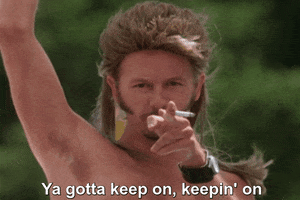View attachment 1053223
Although chainsaws differ from model to model, they operate on similar principles. In this blog, we will address how chainsaw work as well as potential problems you may encounter.
Two-Cycle Engine
Chainsaws can be powered using an extension cord, battery, or gasoline.
Most gasoline-powered chainsaws use a two-cycle engine which requires the gasoline to be mixed with oil for the engine to operate properly. Attempting to run a two-cycle engine without a suitable oil and gas mix, it will cause the engine to cease due to insufficient lubrication.
The main benefit of a two-cycle engine is that allows for a high output of torque while being relatively lightweight. Since chainsaws are intended to be hand-held and operated at different angles, a two-cycle engine is ideal for this application.
Ignition Switch
To start the engine, the ignition switch must be set to the start position. As the starter rope is pulled, the starter engages the drive cup on the flywheel and rotates the crankshaft. The rotating crankshaft connects to the piston which moves up and down within the cylinder and the ignition process begins.
The flywheel has permanent magnets built into it and as it rotates past the ignition coil, a magnetic field is created. The magnetic field induces electricity, allowing the ignition coil to send voltage to the spark plug.
As the piston travels down the cylinder, it exposes an intake port and pumps fuel, oil, and air into the cylinder. As the piston travels back up the cylinder, a vacuum is created, and gas, oil, and the air is drawn through the carburetor into the crankcase.
When the piston reaches the top of the cylinder, the spark plug ignites the compressed fuel and air mixture which forces the piston back down, exposing an exhaust port where the spent fuel exits. A split second later, the intake port is exposed again, fresh fuel is drawn in and the process is repeated with every revolution of the crankshaft.
Muffler and Spark Arrestor
The exhaust from the engine travels through a muffler and spark arrestor. The muffler reduces engine noise while the arrestor prevents burning carbon deposits from exiting the saw and potentially starting a fire.
Choke and Primer Bulb
Engines will have a choke, primer bulb or both to assist with starting, especially when the engine is cold.
The choke will temporarily restrict airflow through the carburetor, so more fuel can enter the cylinder.
Likewise, a primer bulb draws additional fuel through the carburetor which enters the cylinder before the engine is started.
If the engine starts but loses power or stalls shortly after, the spark arrestor may be clogged, which prevents exhaust from exiting the engine. The clog is often caused by using too much oil or the wrong type of oil in the mixture.
If the engine does not start at all, the most likely cause is a defective spark plug or a restricted carburetor. The carburetor can be cleaned but it often needs to be replaced.
Fuel
Be aware that small engines are designed to use gasoline with no more than 10% ethanol. Gasoline with higher levels of ethanol can be corrosive and attract water which can cause starting or running problems and may damage the fuel system or engine.
You should store the gasoline and oil mixture in a clean sealed plastic container approved for fuel storage. If equipped, close the vent when not in use and store the container away from direct sunlight.
If you anticipate storing the fuel for longer than three months, consider adding a fuel stabilizer when you fill the container.
Chain Drive System
The crankshaft of the engine extends out the side of the crankcase and connects to a centrifugal clutch. At idle speed, the engine will run but not fast enough to engage the chain when the throttle trigger is pressed, the engine accelerates, causing the clutch flywheel to extend outward and begin to rotate a drive gear attached to the chain.
The chain rides in a track on a bar as the clutch rotates, it operates a pump to supply a special type of oil to the bar. This chain oil is thick and designed to stick to the bar and chain. Be aware that engine oil is not recommended for this application. Keeping the oil hole clear of debris is vital for proper lubrication. Without lubrication, the bar chain and engine may become damaged.
Chain Brake
For safety purposes, many chainsaws incorporate a chain brake that can be activated manually or automatically to stop the chain if you encounter any kickback during operation. The brakes should also be engaged when moving short distances to help prevent injury.
Chain Guard
Some chainsaws are equipped with a chain guard to keep the tip of the saw from coming into contact with an object or person. Although the safety feature can make the chainsaw less versatile, it is recommended for inexperienced users.
Chain Tension
If the chain is too loose, the gear will not be engaged properly or the chain may become dislodged from the bar and cause injury. If the chain is too tight, the engine or clutch can become damaged.
The chain tension can be adjusted but be sure to follow the manufacturer’s recommendations for the proper setting.
The teeth on the chain should face away from the engine on the top of the chain bar and towards the chain on the bottom.
If the saw is struggling to cut through wood, the chain likely needs to be sharpened or replaced, otherwise, the engine could overheat.


























































